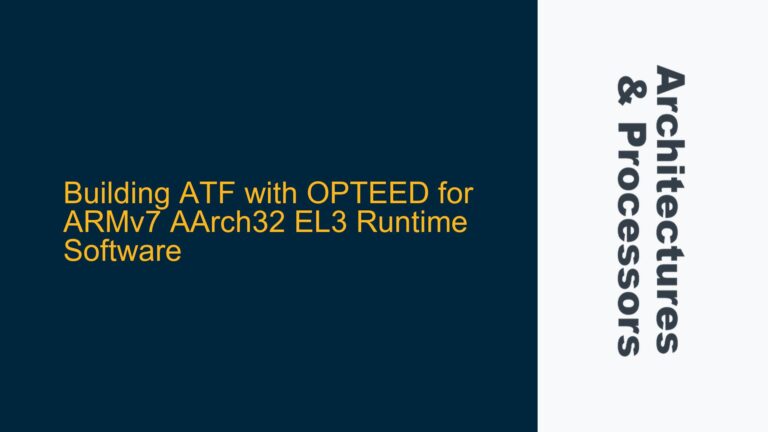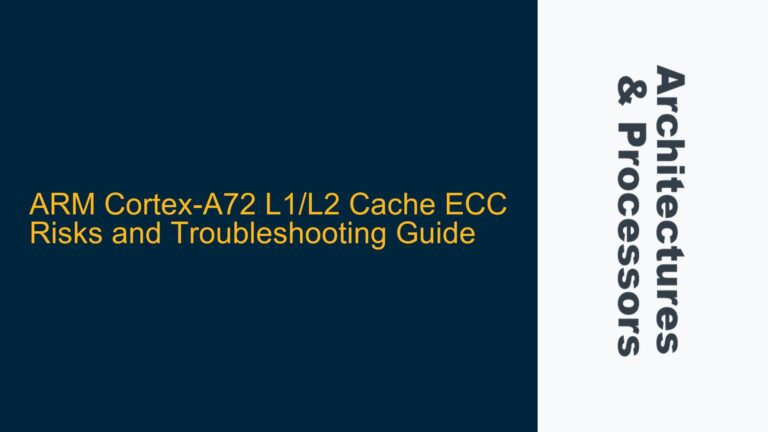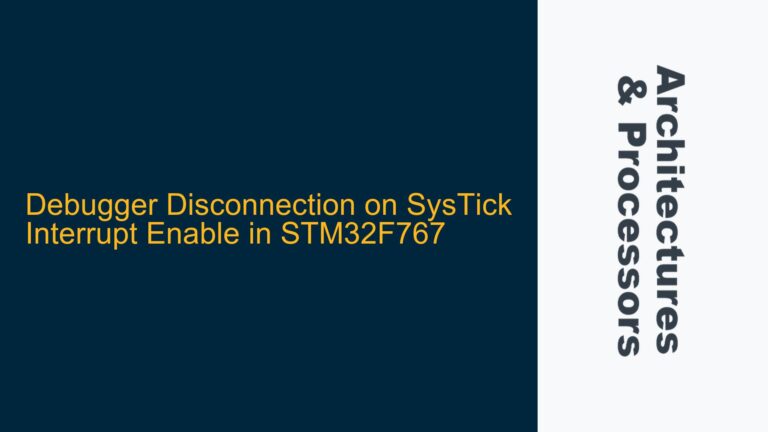ARM Cortex-A53 L1 Snoop Behavior and L2 Cache Access Patterns
The ARM Cortex-A53 processor, a popular choice for embedded systems and mobile applications, exhibits specific behaviors when handling cache coherency between cores. One such behavior involves the L2 cache’s role during core-to-core L1 snoop operations. In a typical scenario, a writer thread on one core repeatedly writes to a contiguous 2K range of RAM, while a reader thread on another core concurrently reads from the same region. This setup often results in a significant number of L1 snoops, as indicated by performance monitoring events. Notably, each snoop operation appears to trigger an L2 cache access, which raises questions about the L2 cache’s involvement in L1-to-L1 transfers.
The Cortex-A53’s L1 and L2 cache hierarchy is designed to optimize performance and power efficiency. However, the observed behavior suggests that the L2 cache is not bypassed during L1 snoop operations, even though one might expect L1-to-L1 transfers to occur without involving the L2 cache. This behavior can be attributed to the Cortex-A53’s cache coherency protocol and the specific optimizations implemented in its memory subsystem. Understanding these mechanisms is crucial for diagnosing performance bottlenecks and optimizing system behavior.
Write-Streaming Optimization and Store-Merge Buffer Effects
One of the key factors influencing the Cortex-A53’s cache behavior during L1 snoop operations is the write-streaming optimization. This optimization, controlled by the CPUACTLR_EL1 register, disables write allocation in the L1 and L2 caches after a certain number of write misses. When the writer thread experiences a high number of write misses due to concurrent snoops from the reader thread, the write-streaming optimization may kick in, causing the writes to bypass the L1 cache and directly involve the L2 cache.
Additionally, the Cortex-A53 employs a store-merge buffer between the L1 and L2 caches. This buffer merges multiple small writes into larger cacheline-sized writes before they are committed to the L2 cache. In scenarios where the writer thread performs byte-level writes, the store-merge buffer consolidates these writes into 8-byte chunks, which aligns with the observed one snoop per 8 bytes behavior. This mechanism explains why each snoop operation appears to trigger an L2 cache access, as the store-merge buffer ensures that the L2 cache is updated with the merged writes.
The combination of write-streaming optimization and the store-merge buffer’s behavior results in the L2 cache being actively involved in what might initially appear to be L1-to-L1 transfers. This involvement is not due to the L2 cache being inclusive of the L1 cache but rather a consequence of the Cortex-A53’s memory subsystem optimizations. These optimizations, while beneficial for reducing write traffic and improving power efficiency, can lead to unexpected performance characteristics in certain workloads.
Diagnosing and Mitigating L2 Cache Access Overhead During Snoops
To address the performance impact of L2 cache accesses during L1 snoop operations, several diagnostic and mitigation strategies can be employed. First, it is essential to confirm the Cortex-A53’s cache coherency protocol and the specific configuration of the CPUACTLR_EL1 register. This confirmation ensures that the write-streaming optimization is indeed active and contributing to the observed behavior. Performance monitoring counters can be used to track the number of L1 snoops, L2 cache accesses, and write misses, providing a detailed picture of the cache behavior during the test.
Once the underlying mechanisms are understood, several approaches can be taken to mitigate the performance impact. One approach is to adjust the write-streaming optimization thresholds by modifying the CPUACTLR_EL1 register. Increasing the threshold for disabling write allocation may reduce the frequency of L2 cache accesses during snoop operations, though this must be balanced against the potential increase in write traffic to the L1 cache.
Another approach is to optimize the memory access patterns of the writer and reader threads. Ensuring that writes and reads are aligned to cacheline boundaries can reduce the number of small writes that trigger the store-merge buffer, thereby minimizing L2 cache involvement. Additionally, using synchronization mechanisms such as memory barriers or explicit cache management instructions can help control the timing and frequency of snoop operations, further reducing the performance overhead.
In conclusion, the Cortex-A53’s L2 cache involvement during L1 snoop operations is a result of its write-streaming optimization and store-merge buffer behavior. Understanding these mechanisms is crucial for diagnosing performance issues and implementing effective optimizations. By carefully configuring the CPUACTLR_EL1 register, optimizing memory access patterns, and employing appropriate synchronization techniques, the performance impact of L2 cache accesses during snoop operations can be mitigated, leading to more efficient system behavior.






